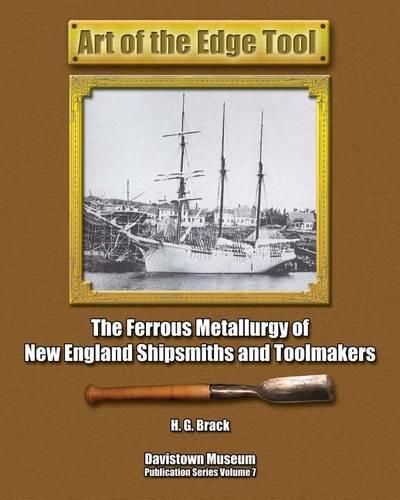Readings Newsletter
Become a Readings Member to make your shopping experience even easier.
Sign in or sign up for free!
You’re not far away from qualifying for FREE standard shipping within Australia
You’ve qualified for FREE standard shipping within Australia
The cart is loading…






In this volume of the Hand Tools in History series, author H. G. Skip Brack explores the stories told by the forge welded edge tools discovered in New England tool chests and workshops during his 40 years of searching out useful woodworking tools for the Liberty Tool Company in Maine. Also the founder and curator of the Davistown Museum, Brack wrote The Art of the Edge Tool to complement the museum collection, tell the story of early American toolmakers and answer the questions of when, how and where New England shipsmiths ironed wooden sailing ships and forged edge tools for the shipwrights. He explains the milieu of these toolmakers and links it to New England’s maritime trading economy and the late 19th century florescence of American hand tool manufacturing and shipbuilding which followed. History buffs and anyone interested in woodworking tools, their history and the role they played in the evolution of America’s maritime and industrial economy are sure to enjoy Brack’s work.
$9.00 standard shipping within Australia
FREE standard shipping within Australia for orders over $100.00
Express & International shipping calculated at checkout
In this volume of the Hand Tools in History series, author H. G. Skip Brack explores the stories told by the forge welded edge tools discovered in New England tool chests and workshops during his 40 years of searching out useful woodworking tools for the Liberty Tool Company in Maine. Also the founder and curator of the Davistown Museum, Brack wrote The Art of the Edge Tool to complement the museum collection, tell the story of early American toolmakers and answer the questions of when, how and where New England shipsmiths ironed wooden sailing ships and forged edge tools for the shipwrights. He explains the milieu of these toolmakers and links it to New England’s maritime trading economy and the late 19th century florescence of American hand tool manufacturing and shipbuilding which followed. History buffs and anyone interested in woodworking tools, their history and the role they played in the evolution of America’s maritime and industrial economy are sure to enjoy Brack’s work.